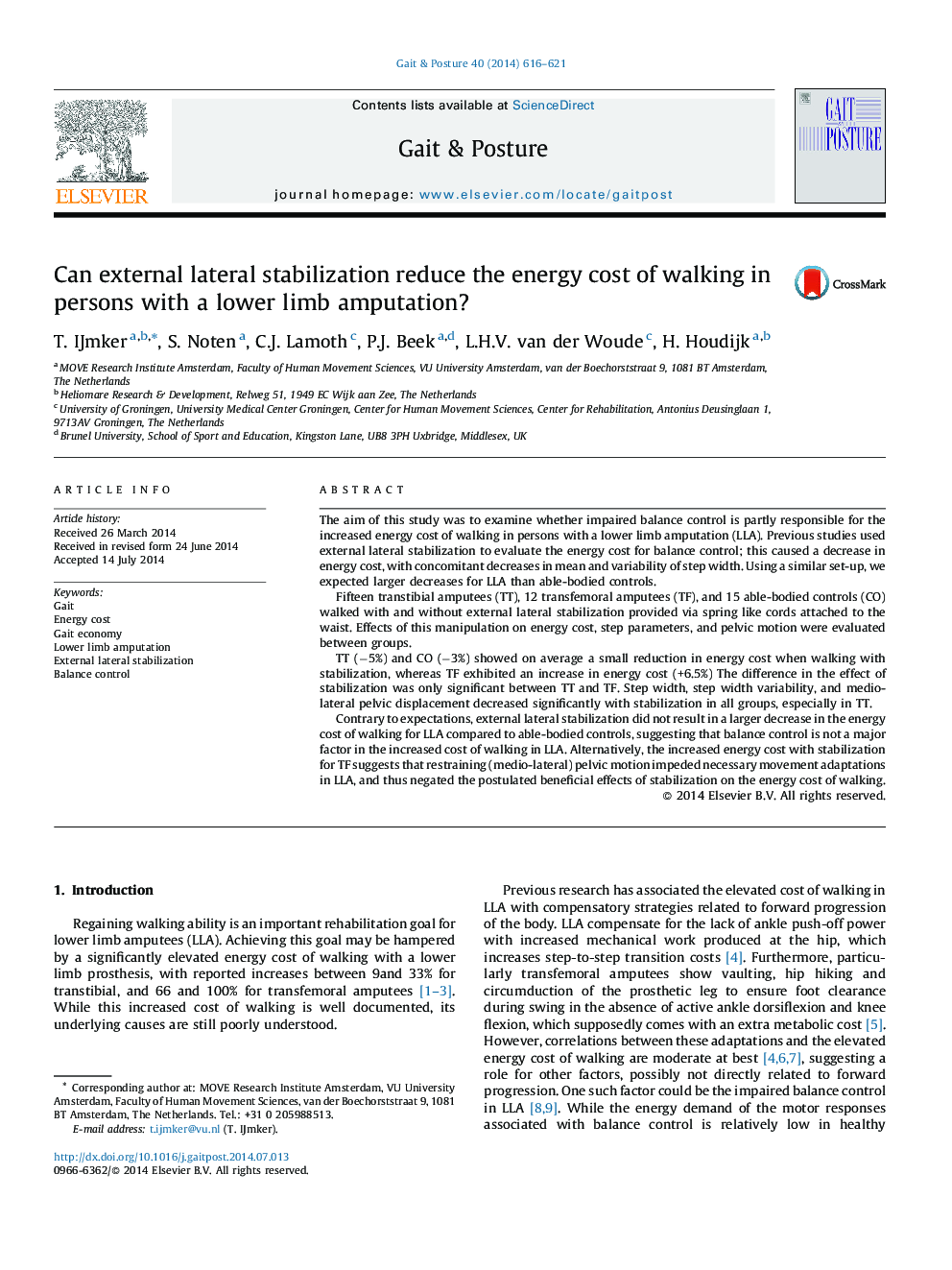| کد مقاله | کد نشریه | سال انتشار | مقاله انگلیسی | نسخه تمام متن |
|---|---|---|---|---|
| 6205954 | 1603853 | 2014 | 6 صفحه PDF | دانلود رایگان |
- We aimed to evaluate the energy cost for balance control in amputees and controls.
- External lateral stabilization was used to determine the energy cost for balance control.
- Stabilization was beneficial in transtibial but detrimental in transfemoral amputees.
- The stabilization device possibly impedes necessary gait adaptations in amputees.
- The energy cost for balance control in amputees remains to be determined.
The aim of this study was to examine whether impaired balance control is partly responsible for the increased energy cost of walking in persons with a lower limb amputation (LLA). Previous studies used external lateral stabilization to evaluate the energy cost for balance control; this caused a decrease in energy cost, with concomitant decreases in mean and variability of step width. Using a similar set-up, we expected larger decreases for LLA than able-bodied controls.Fifteen transtibial amputees (TT), 12 transfemoral amputees (TF), and 15 able-bodied controls (CO) walked with and without external lateral stabilization provided via spring like cords attached to the waist. Effects of this manipulation on energy cost, step parameters, and pelvic motion were evaluated between groups.TT (â5%) and CO (â3%) showed on average a small reduction in energy cost when walking with stabilization, whereas TF exhibited an increase in energy cost (+6.5%) The difference in the effect of stabilization was only significant between TT and TF. Step width, step width variability, and medio-lateral pelvic displacement decreased significantly with stabilization in all groups, especially in TT.Contrary to expectations, external lateral stabilization did not result in a larger decrease in the energy cost of walking for LLA compared to able-bodied controls, suggesting that balance control is not a major factor in the increased cost of walking in LLA. Alternatively, the increased energy cost with stabilization for TF suggests that restraining (medio-lateral) pelvic motion impeded necessary movement adaptations in LLA, and thus negated the postulated beneficial effects of stabilization on the energy cost of walking.
Journal: Gait & Posture - Volume 40, Issue 4, September 2014, Pages 616-621
